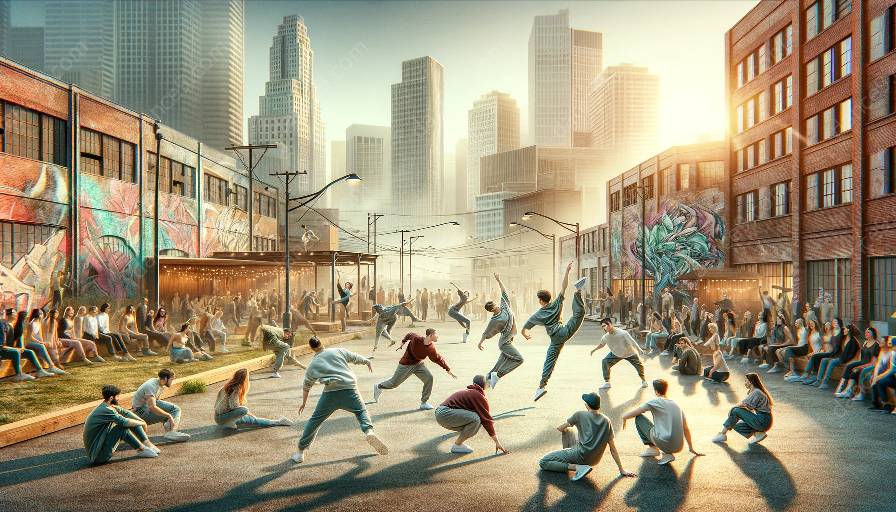Contemporary dance improvisation is a dynamic and expressive form of movement that allows dancers to explore their emotions and embody the essence of their personal experiences. In this article, we will delve into the profound connection between emotion and embodiment within the context of contemporary dance improvisation.
The Intersection of Emotion and Embodiment
Contemporary dance improvisation often involves the spontaneous creation of movement sequences, allowing performers to tap into their emotional depths and physical expressions with authenticity and immediacy. The intersection of emotion and embodiment in this context is a profound exploration of the human experience, shaping the essence of the art form.
Through the embodiment of emotions, dancers translate their internal experiences into external manifestations, creating a resonant and captivating form of artistic expression. The nuanced movements, gestures, and interactions in contemporary dance improvisation serve as a canvas for the raw and unfiltered expression of human emotions, bridging the gap between the intangible emotional landscape and tangible physicality.
The Role of Personal Experience
Contemporary dance improvisation invites performers to draw from their personal experiences, memories, and sensations to inform their movements and expressions. This deeply personal approach to dance allows for an authentic and visceral reflection of the self, transcending linguistic and cultural barriers to communicate universal emotions and narratives.
By integrating personal experiences into their improvised movements, dancers infuse their performances with a rich tapestry of emotions, inviting audiences to connect with the raw, unstructured authenticity of their expressions. From joy and love to sorrow and despair, the spectrum of human emotions becomes a palpable and immersive force within the fluidity of contemporary dance improvisation.
The Kinetic Language of Emotion
In contemporary dance improvisation, the body becomes a vessel for the articulation of complex emotions, offering a kinetic language that transcends verbal communication. Through an array of movements, postures, and gestures, dancers articulate the nuanced shades of human emotion, engaging the audience in a multisensory dialogue that transcends intellectual understanding.
The embodiment of emotion through dance allows performers to transcend the constraints of spoken language, bringing forth a profound and visceral mode of communication that resonates with audiences on a primal level. The kinetic language of emotion in contemporary dance improvisation becomes a bridge that unites performers and spectators in a shared experience of raw human expression.
The Expressive Freedom of Improvisation
Within the realm of contemporary dance improvisation, performers are granted the freedom to engage with their emotions and embody their innermost thoughts without the constraints of predefined choreography. This liberating form of artistic expression enables dancers to cultivate a sense of vulnerability and authenticity, embracing the spontaneity and unpredictability of their emotional and physical expressions.
Through the freedom of improvisation, dancers can explore the depths of their emotional landscapes, expressively weaving together moments of intensity, subtlety, and profound introspection. The expressive freedom inherent in contemporary dance improvisation fosters an environment where emotions can flow seamlessly through movement, transcending traditional narratives and offering a window into the raw essence of human experience.
Emotion, Embodiment, and Artistic Evolution
As the dynamic interplay of emotion and embodiment continues to shape the landscape of contemporary dance improvisation, the art form evolves as a reflection of the ever-changing human experience. Dancers continuously push the boundaries of traditional movement conventions, exploring new ways to embody and express the depth and breadth of human emotion through their art.
This evolving artistic landscape serves as a testament to the enduring relevance and power of emotion and embodiment in contemporary dance improvisation. It is a living embodiment of the human spirit, offering a compelling and immersive experience that speaks to the hearts and minds of audiences around the world.




























